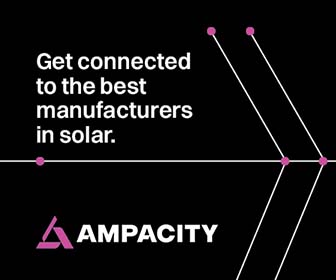Planning for Success: Computer modeling for productivity
Using proper planning and risk evaluation, an owner can complete a complex solar energy project more quickly, cost-effectively, and independently than ever before—even without a developer or a power purchase agreement (PPA) in some cases. Part of the planning process simply requires the right modeling tools and feasibility analysis techniques be used to compare multiple alternatives and select the best project layout and options.
Proof positive of this is a new solar facility in Ohio. Developed by a non-profit wholesale power supplier for municipal electric systems, the solar facility was connected to a municipal electric system to provide renewable energy and transmission savings. The client completed the project in less than one year, from pre-feasibility planning to power generation, including a construction period of less than six months.
To assess the feasibility of the project, multiple initial permutations of the project parameters were analyzed. These included module technology, panel angle, and row arrangement on the 20-acre site, based on various configurations of land usage.
The client opted for a cost-effective, self-directed solution in this case, rather than asking a third-party developer for a standard turnkey system or entering into a PPA.
To ensure this approach worked, proper completion of the following tasks were imperative:
• Determining the solar capacity of the site;
• Simulating solar production from multiple layouts and module technologies to determine the optimal array design;
• Providing the basic layouts of the arrays;
• Completing a full-cost pro forma for the final arrangement; and
• Developing plans and specifications for construction.
Tackling constraints
This solar project was required to generate approximately four megawatts of DC power on a 20-acre site, with an unusual configuration. Rather than having a simple, 20-acre rectangle, however, the site was comprised of several smaller parcels of varying dimensions and shapes. Allowing for roads, fencing, and shading clearances, the site configuration created several challenges.
Perhaps not surprisingly, multi-variant comparisons of three module technologies were required, as was multiple physical configurations—of course, all within the context of an aggressive project schedule. The ultimate goal, as with most any solar energy project, was to maximize the number of panels to meet the required amount of power, but within the limits of this oddly shaped site.
Customized analysis
To ensure project success, a custom-designed tool allowed for quick arrangements of the solar site to optimize time, costs, and efficiency. The software proved particularly useful for large, utility-scale fields. It works in four phases:
1. Enter a digital survey drawing, map, or aerial photograph into the modeling tool, and trace the perimeter;
2. Specify the potential parameters of the installation, including the site requirements, panel type, panel angle, and arrangement;
3. The tool automatically fills the field and computes the total number of panels that will fit in the space; and
4. Finally, the tool is used to compare alternatives based on varying arrangements and panel angles, which enables determination of the optimal design of the solar field to generate maximum annual energy.
For this particular project, the modeling tool was used to perform a cost-effective analysis of 18 separate array permutations, within the site parameters. This included three module technologies of differing initial costs, efficiencies, varying angles, as well as the available space on the 20-acre site, based on various configurations of land usage. The different configuration permutations were considered, along with moving and/or removing rows of modules to provide shading clearance, road access, or drainage areas.
Energy production for all of the permutations were eventually compared, making fine adjustments for the arrangement to maximize the total number of panels that could be fit in the space, as well as for the annual energy production.
For each configuration, a separate detailed energy production simulation was run to generate the annual estimated energy output over 25 years. Then, a 25-year lifecycle cost was determined for the differing systems based on panel types, numbers, and inverter types. Factoring in the site costs, the estimated cost pro-forma for each scenario was finalized. As a result, it was possible to establish the longest lifecycle and most cost-effective combination of equipment types and site arrangements for the project.
Optimizing project
By making use of software simulation tools for solar modeling multiple panel and technology arrangements, it was possible to maximize production and minimize risk for the initial development project in this case. Detailed financial modeling and iterations optimized investment return.
As this project helps demonstrate, owners can develop customized utility-scale solar facilities cost effectively, in a short time period, by relying on consulting engineers with the right tools and expertise.
Zach Platsis, PMP, CEM, CMVP, LEED AP O+M, is an energy consultant with SSOE Group. He leads energy and sustainability assessments, renewable and alternative energy studies, and development of energy master plans.
SSOE Group
www.ssoe.com
Author: Zach Platsis
Volume: March/April 2014









.png?r=4158)


